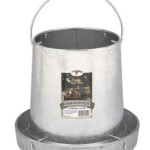
This may not be true for everyone, but on the west coast, a premium bag of soy-free, organic layer pellets averages $0.70 per pound. My homemade chicken feed actually costs the same as the commercial poultry feed at my local feed store. I felt the benefits of a whole grain diet outweighed those of an organic (but processed) diet.Īs it turned out, my homemade poultry feed is almost all organic, thanks to bulk purchases from Azure Standard and my local supermarket. (A pro-soy study found that soy protein transferred to the egg yolks and tissues of commercial chickens-even commercial “organic” chickens-fed a predominantly soy diet.)Īn all-organic feed was originally not as important to me as a soy-free feed. I know I can’t avoid it in my diet, but I can limit my intake of soy by choosing not to feed it to my chickens. Soy is one of the most genetically-modified foods in the world, and it’s included in almost everything we eat.

But it’s also an incomplete protein, an unnatural source of food, and a highly processed food.Īs with anything highly processed, soy has potentially harmful health effects ranging from vitamin deficiencies to hormone disruptions-especially when consumed in the crazy amounts that our culture does. Why should chicken feed be soy-free and organic?īecause of its cheapness, availability, and high amount of protein, soy is a large part of a commercial chicken’s diet.

I imagine that people wanting to make their own feed at home are likely also the sort of chicken keepers that let their chickens forage for bugs and weeds, or give their chickens mealworm treats and kitchen scraps. Layers need at least 16 percent protein and the rest is common sense-not too much fat, not too many carbs, and that last piece of chocolate cake is probably not a good idea. The greater variety of grains, legumes, and seeds you can provide your chickens, the healthier and happier they will be. Like humans, chickens need a diverse diet and sometimes they need a different diet in winter than they do in summer. View my policy.īulk Storage Bin Is a homemade whole grain diet a complete diet for a chicken? Disclosure: Garden Betty earns commissions on purchases made through these links to my affiliated retailers. This leads me to believe that their bodies are processing the food better and it’s not just passing through them. With a whole grain diet, I’ve noticed that my hens eat less and poop less (as opposed to the crumble diet they started on). On the other hand, whole grains (which you can pick and choose) retain all of their nutrients. Since real food comes out of my chickens, I want real food to go into them.Ĭrumbles and pellets are already formulated to contain the nutritional balance that a chicken needs, but the process of cracking, mashing, pressing and/or heating the grains (often times, not even quality grains) causes them to go stale and lose some of their nutritional value-even months before you buy them. Why should you make your own whole grain chicken feed?Ĭommercial poultry feed comes in crumble or pellet form, neither of which looks like real food to me. Garden Betty’s Homemade Whole Grain Chicken Feed.How do you switch a flock from crumbles/pellets to whole grains?.How do you store all the whole grain ingredients?.


Is a homemade whole grain diet a complete diet for a chicken?.Why should you make your own whole grain chicken feed?.


 0 kommentar(er)
0 kommentar(er)
